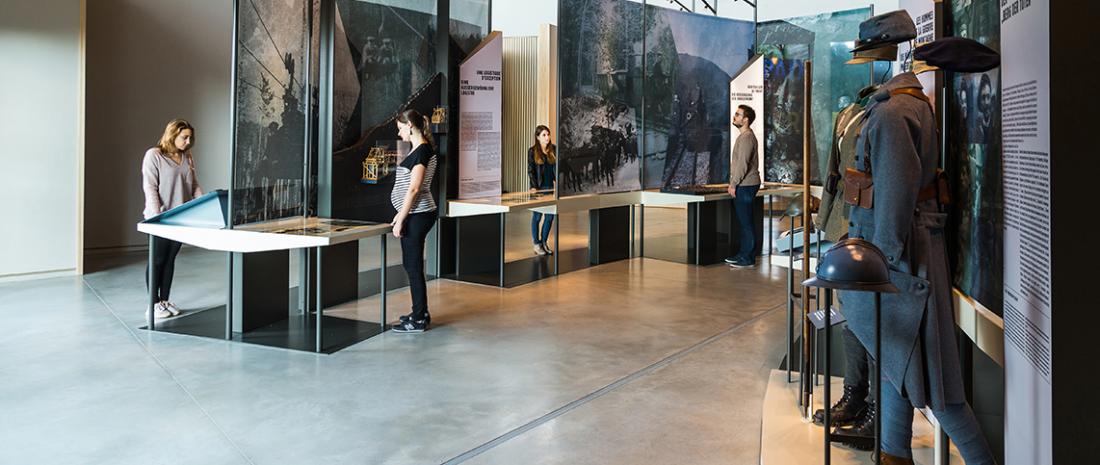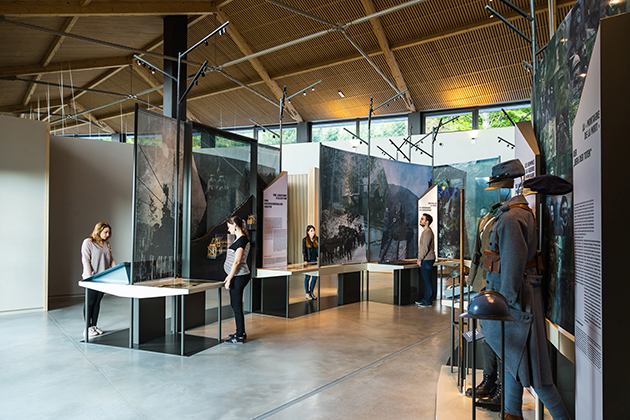The Historial Franco-Allemand, Hartmannswillerkopf
Sous-titre
Interview with Jean Klinkert, chair, Hartmannswillerkopf National Monument Committee

Jean Klinkert looks back at the history of this remembrance site and the origins of the bilateral initiative to create a Franco-German history museum. He takes stock of the site’s first four years of existence (it opened for the centenary), with a special focus on young people.
Jean Klinkert. © Rights reserved
Could you briefly present the Historial Franco-Allemand of Hartmannswillerkopf and take us back to its origins?
On 2 February 1921, the battlefield of Hartmannswillerkopf (HWK), also known as Le Vieil Armand, became the first World War I battleground to be classified as a historic monument. A hundred years on, the site is one of the symbols of Franco-German friendship. What a long way we have come since the end of the First World War!
Hartmannswillerkopf was initially remembered, in the 1920s, with a narrative that favoured only French troops, then it was gradually forgotten on both sides at the end of the Second World War. In the 1960s, after the signing of the Élysée Treaty, groups of German tourists began coming more and more frequently to the former battlefield.
Renovation work beginning in late 2008 and lasting several years culminated in a fully restored national monument. There was a dual focus on creating a safe, trilingual educational trail and implementing measures to protect and enhance the landscape and remains of the battlefield.
On 3 August 2014, French president François Hollande and German president Joachim Gauck laid the foundation stone of the museum, which was designed in collaboration with a Franco-German advisory committee chaired by Gerd Krumeich and Nicolas Offenstadt. The museum was officially opened by presidents Emmanuel Macron and Frank-Walter Steinmeier on 10 November 2017.
The museum is divided into four areas whose goal is to present, if not a joint memory of the First World War, then at least one that is split between France and Germany.
An original film introduces the historical background to the declaration of war in 1914. After an animated representation of the mountain warfare on HWK, the exhibition focuses on the everyday lives of the soldiers, and also on Franco-German remembrance.
The project was able to be brought to fruition due to the immediate and unwavering support of the French Ministry of the Armed Forces, in particular through the Directorate for Heritage, Remembrance and Archives, and the regional authorities. An active partnership with the VDK, the German war graves commission, enabled us to obtain substantial EU funding.

The Historial Franco-Allemand, Hartmannswillerkopf. © AAA-IllProd
What is its main purpose?
The purpose is multiple, offering both a way in and a bridge between the historical elements of the site: the battlefield, national cemetery and national monument.
This new structure explains the events that took place on this mountain between 1914 and 1918 to the different types of visitors who come here every year. The entirely bilateral approach is particularly popular with German-speaking tourists from the Rhineland.
In broad terms, the exhibition offers the keys to understanding the site and its iconic monuments. The new structure also caters for practical needs, with a gift shop, café, toilets and an electric-bike charging station.
Après quatre années d’existence, quel regard le jeune public français et allemand porte-t-il sur cette structure bilatérale, symbole de réconciliation ?
When they visit the museum, young people find concrete answers to the questions they have about the First World War. They also get a lot out of the excitement which a visit to the site can offer.
Using the digital and audiovisual resources available to them, they are able to add to their knowledge and gain a good grasp of the complexity of the issues. A new opportunity to take part in archaeological excavation through workshops in French and German offers a hands-on experience of shared memory.
Young people from both countries also approach the memory of the tragedy of the Great War by transposing it to contemporary history. Thus, they think about the rise of extremism, the growth of populism and increasingly inward-looking societies.
When they come to the museum, young people become aware of how crucially important the Franco-German entente is to peace in Europe. Peace is precious, and the museum motto reminds us of that: Liberté, Amitié et Paix – Freiheit, Freundschaft und Frieden ! (Freedom, Friendship and Peace)

